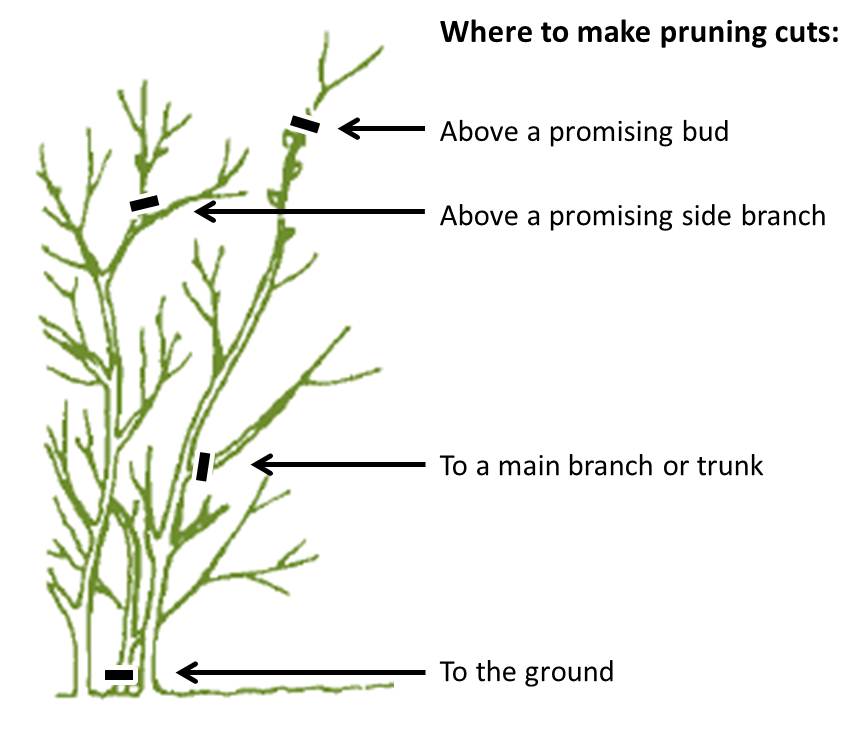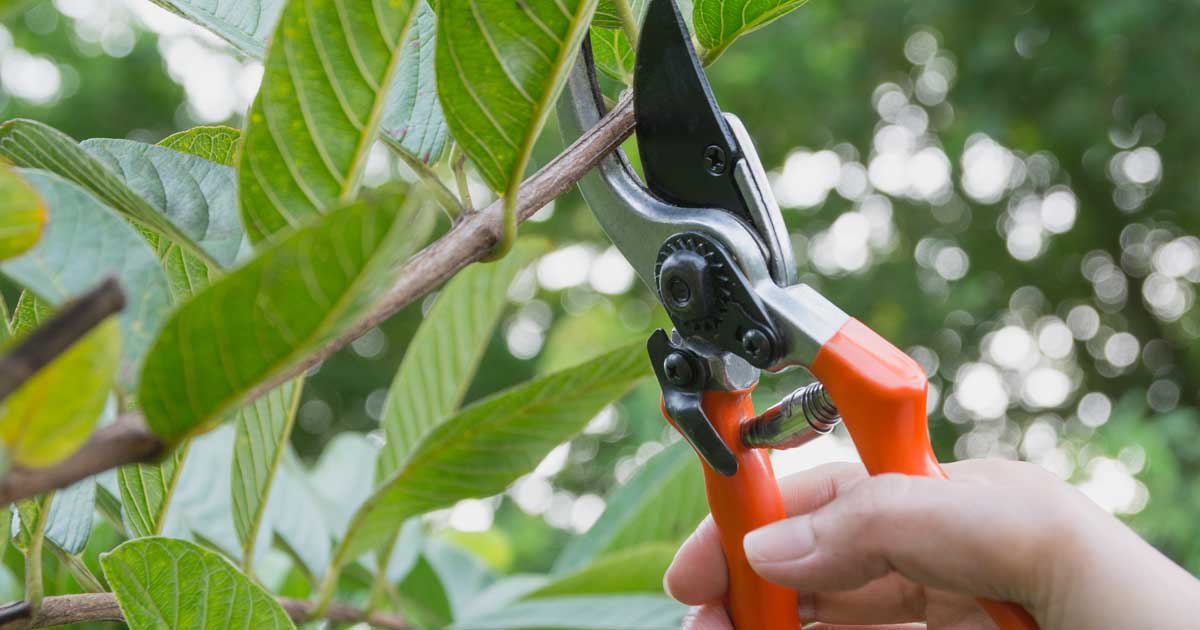Master Pruning: Boost Plant Growth Today

Imagine stepping into a lush, vibrant garden where every plant seems to be thriving, reaching for the sky with an almost palpable energy. What's the secret behind this green utopia? It's not just about watering and sunlight; it's about the art of pruning. Mastering how to prune plants for better growth can transform your garden from ordinary to extraordinary. Let's dive in and discover the magic of pruning!
Understanding the Basics of Pruning
Pruning is more than just trimming plants; it's a crucial aspect of garden maintenance that can significantly impact plant health and growth. But why is pruning so important? Think of it like giving your plants a much-needed haircut. Just as a good trim can make you feel refreshed and rejuvenated, pruning helps plants shed dead weight, encouraging new growth and promoting overall health.
Why Prune?
Pruning serves multiple purposes:
- Promoting Growth: By removing dead or diseased branches, you allow the plant to focus its energy on new, healthy growth.
- Shaping and Training: Pruning helps shape plants into desired forms, whether it's a neat hedge or a beautifully shaped tree.
- Improving Air Circulation: Proper pruning can prevent overcrowding, allowing better airflow and reducing the risk of diseases.
- Enhancing Aesthetics: A well-pruned plant is not only healthier but also more visually appealing.
Essential Pruning Tools
Before you start, it's important to have the right pruning tools. Think of these as your gardening arsenal, each tool serving a specific purpose:
- Pruning Shears: Ideal for cutting small branches and stems.
- Loppers: Perfect for thicker branches up to 2 inches in diameter.
- Pruning Saws: For larger branches that shears and loppers can't handle.
- Hedge Trimmers: Great for shaping hedges and shrubs.

When to Prune
Timing is everything when it comes to pruning. Different plants have different pruning needs, but there are some general guidelines you can follow:
- Spring: This is the best time to prune many deciduous trees and shrubs, just as new growth begins.
- Summer: Prune spring-flowering shrubs right after they bloom to encourage next year's flowers.
- Fall: Avoid heavy pruning in fall, as it can stimulate new growth that won't have time to harden off before winter.
- Winter: Dormant pruning can be done in late winter or early spring before new growth starts.
Techniques for Effective Pruning
Mastering how to prune plants for better growth involves understanding various plant care techniques. Here are some key methods:
Heading Cuts
Heading cuts involve removing the terminal bud, encouraging side shoots to grow. This technique is great for promoting bushier growth in shrubs and hedges.
Thinning Cuts
Thinning cuts remove entire branches back to their point of origin. This method is used to open up the plant's canopy, improving air circulation and light penetration.
Deadheading
Deadheading is the process of removing faded flowers. This not only keeps the plant looking tidy but also encourages more blooms.
Pinching
Pinching is a gentle form of pruning where you use your fingers to remove the growing tips of young plants. This encourages bushier growth and is particularly useful for herbs and annuals.
Pruning Different Types of Plants
Not all plants are created equal, and neither are their pruning needs. Here's a quick guide to pruning some common garden plants:
Trees
Trees require careful pruning to maintain their structure and health. Focus on removing dead, diseased, or crossing branches. For fruit trees, prune to encourage fruit production and easy harvesting.
Shrubs
Shrubs benefit from regular pruning to keep them compact and bushy. Use heading cuts to encourage dense growth and thinning cuts to remove old, woody stems.
Roses
Roses need special attention. Prune in late winter or early spring, removing dead canes and opening up the center of the plant to improve air circulation.
Hedges
Hedges require frequent trimming to maintain their shape. Use hedge trimmers to keep the top narrower than the base, allowing light to reach the bottom of the hedge.

Common Pruning Mistakes to Avoid
Even the most well-intentioned gardeners can make pruning mistakes. Here are some common pitfalls to avoid:
- Over-Pruning: Too much pruning can stress the plant and reduce its ability to photosynthesize.
- Under-Pruning: Not pruning enough can lead to overcrowding and increased risk of disease.
- Improper Cuts: Poorly made cuts can damage the plant and invite pests and diseases. Always make clean, precise cuts.
- Wrong Timing: Pruning at the wrong time can disrupt the plant's natural growth cycle.
The Art of Pruning: Tips from the Pros
Pruning is both a science and an art. Here are some pro tips to help you master the craft:
- Start Small: Begin with minor pruning tasks and gradually take on more complex jobs as you gain confidence.
- Observe: Spend time observing your plants to understand their growth habits and pruning needs.
- Practice: Like any skill, pruning improves with practice. Don't be afraid to experiment and learn from your mistakes.
Conclusion
Mastering how to prune plants for better growth is a journey that can transform your garden into a thriving oasis. By understanding the basics, using the right tools, and applying effective techniques, you can promote healthier, more vibrant plants. So, grab your pruning shears and let's get started! Remember, every cut is a step towards a greener, more beautiful garden.
Ready to take your garden to the next level? Click here to learn more about advanced pruning techniques and garden maintenance tips.
FAQs
What is the best time to prune fruit trees?
- The best time to prune fruit trees is typically in late winter or early spring, just before new growth begins. This helps to promote vigorous growth and fruit production.
How often should I prune my hedges?
- Hedges generally need to be pruned at least once or twice a year to maintain their shape and density. Formal hedges may require more frequent trimming.
Can I prune my plants in the fall?
- While light pruning can be done in the fall, it's generally best to avoid heavy pruning during this season. Fall pruning can stimulate new growth that may not have time to harden off before winter.
What tools do I need for pruning?
- Essential pruning tools include pruning shears, loppers, pruning saws, and hedge trimmers. Each tool serves a specific purpose, depending on the size and type of plant you're pruning.
How can I tell if my plant needs pruning?
- Signs that your plant needs pruning include overcrowded branches, dead or diseased wood, and poor air circulation. Regular observation and understanding your plant's growth habits can help you determine when it's time to prune.
0 Response to "Master Pruning: Boost Plant Growth Today"
Post a Comment